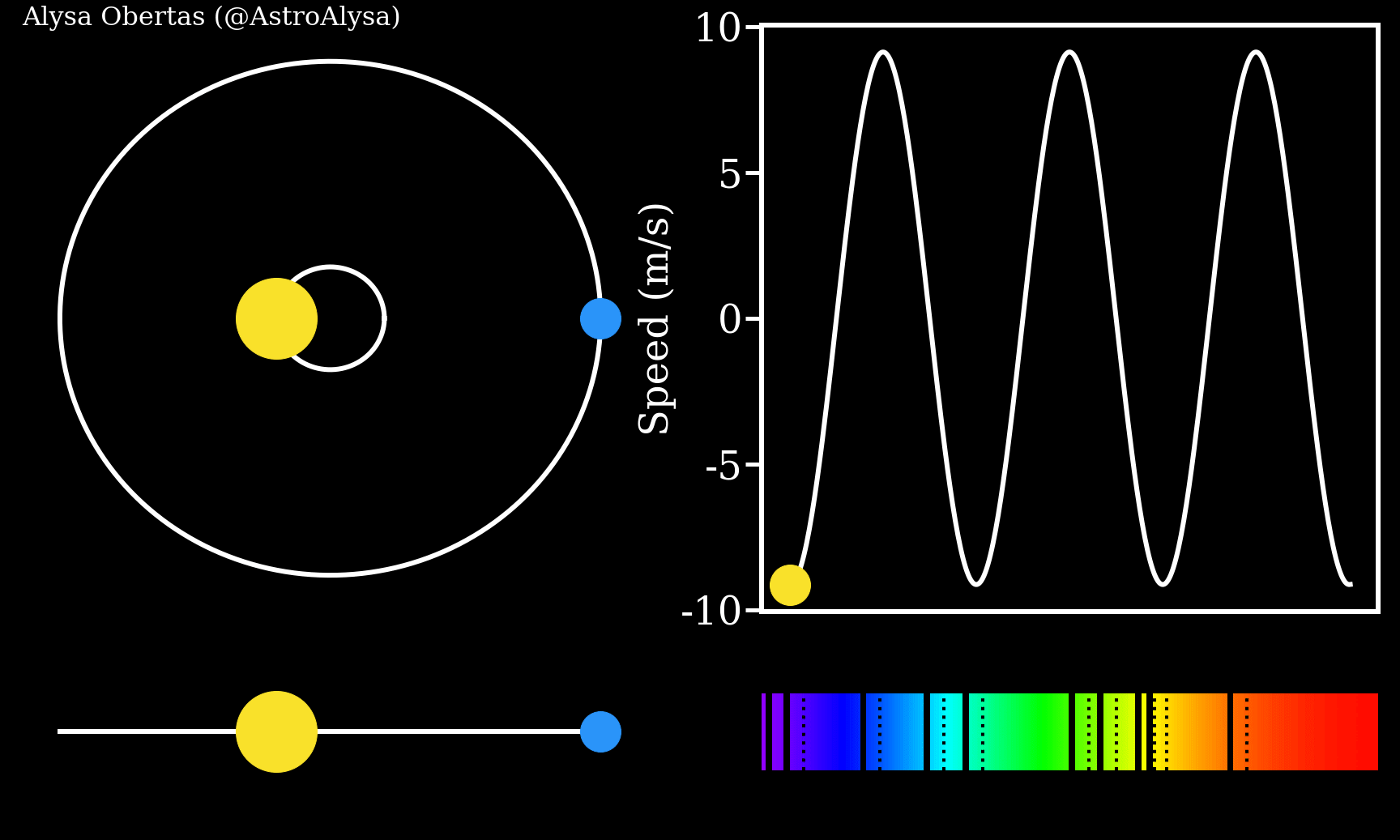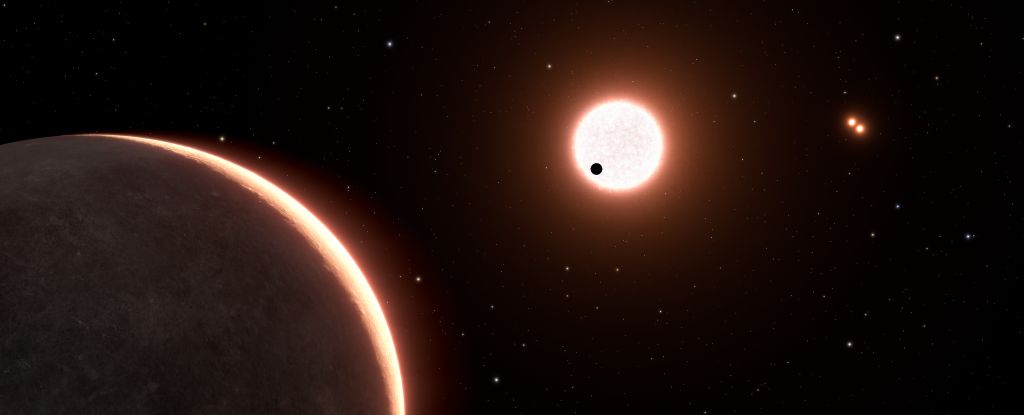Just 22 light-years away, orbiting a small red dwarf star, a tiny world has been confirmed by scientists in the US as the closest known Earth-sized world to our Solar System.
It’s called LTT 1445 Ac, an exoplanet some 1.37 times the mass and 1.07 times the radius of Earth.
While it is unfortunately too hot for life, its similarity to our homeworld marks it as an Earth analog – a world so close to our own that we can use it to study how planets evolve, and what makes one Earth-like world so very different from another.
LTT 1445 Ac was first identified using data from the TESS exoplanet-hunting telescope in 2021, but there were some difficulties observing it that meant astronomers couldn’t be certain of its properties.
The exoplanet lives in an unusual system: The star it orbits is one of three stars, gravitationally bound in a trinary system.
We find and study exoplanets by looking for changes in the light of the host star; but in systems of stars, the stellar companions also have an effect on the light of the other stars. Even though 22 light-years is relatively close, an Earth-sized world is a pretty tiny thing to try and look at.
To understand the properties of an exoplanet, ideally two types of measurement are required. The first is transit data: the tiny dips in starlight that occur when an orbiting exoplanet passes between us and the star.
The second is radial velocity data; it measures the amount an exoplanet’s gravity tugs on the star by recording changes in the wavelength of starlight as it very, very minutely wobbles on the spot.
The transit data tells us the radius of an exoplanet, which can be calculated from the amount the star’s light dims during a transit. The radial velocity data tells us the exoplanet’s mass.
Together, the radius and mass can be combined to tell us the density of the exoplanet – and from that, we can make a very good estimate of what the exoplanet is made of.
A low density implies lots of atmosphere, like a gas giant. A higher density implies a rocky composition, like Earth, Venus, Mars, or Mercury.
TESS detects planets using the transit method, but the TESS data on LTT 1445 Ac was poorly resolved, making it hard to tell if the dimming was the result of an entire planet eclipsing the starlight, or just part of a planet ‘grazing’ the sun’s disc.
The presence of the exoplanet was confirmed using radial velocity data. But to gain a better understanding of the properties of the world, higher resolution transit data was needed.

This is where the Hubble Space Telescope comes in. Using Hubble’s Wide Field Camera 3, a team led by astrophysicist Emily Pass of the Harvard & Smithsonian Center for Astrophysics took observations of the LTT 1445 system, looking for transits of LTT 1445 Ac.
Some of the dips in starlight in the system were the result of the three stars interacting with each other; and some of the uncertainty from the TESS data was the result of these interactions. But the team was able to record the exoplanet crossing the face of the star – and with this, Pass and her colleagues were able to obtain a high-resolution measurement of the diameter of LTT 1445 Ac.
With the radius and mass in hand, the researchers were able to determine that the world has a density of 5.9 grams per cubic centimeter. Earth has a density of 5.51 grams per cubic centimeter. This suggests that LTT 1445 Ac is probably a rocky exoplanet very close to Earth in size and composition.

Now, the world is unlikely to host life as we know it. Its host star is a red dwarf, which is cooler and dimmer than the Sun, but the exoplanet has an orbital period of just 3.12 days, which means its temperature sits at around 260 degrees Celsius (500 degrees Fahrenheit).
Yet the ability to obtain clear transit data means we have a good shot at peering into its atmosphere.
Characterizing the exoplanet further can help us understand how Earth-like worlds form and evolve in other system architectures, which in turn can help scientists figure out the likelihood of the emergence of life elsewhere in our galaxy.
“Transiting planets are exciting since we can characterize their atmospheres with spectroscopy, not only with Hubble but also with the James Webb Space Telescope,” Pass says.
“Our measurement is important because it tells us that this is likely a very nearby terrestrial planet. We are looking forward to follow-on observations that will allow us to better understand the diversity of planets around other stars.”
The research has been published in The Astronomical Journal.

Dr. Thomas Hughes is a UK-based scientist and science communicator who makes complex topics accessible to readers. His articles explore breakthroughs in various scientific disciplines, from space exploration to cutting-edge research.








